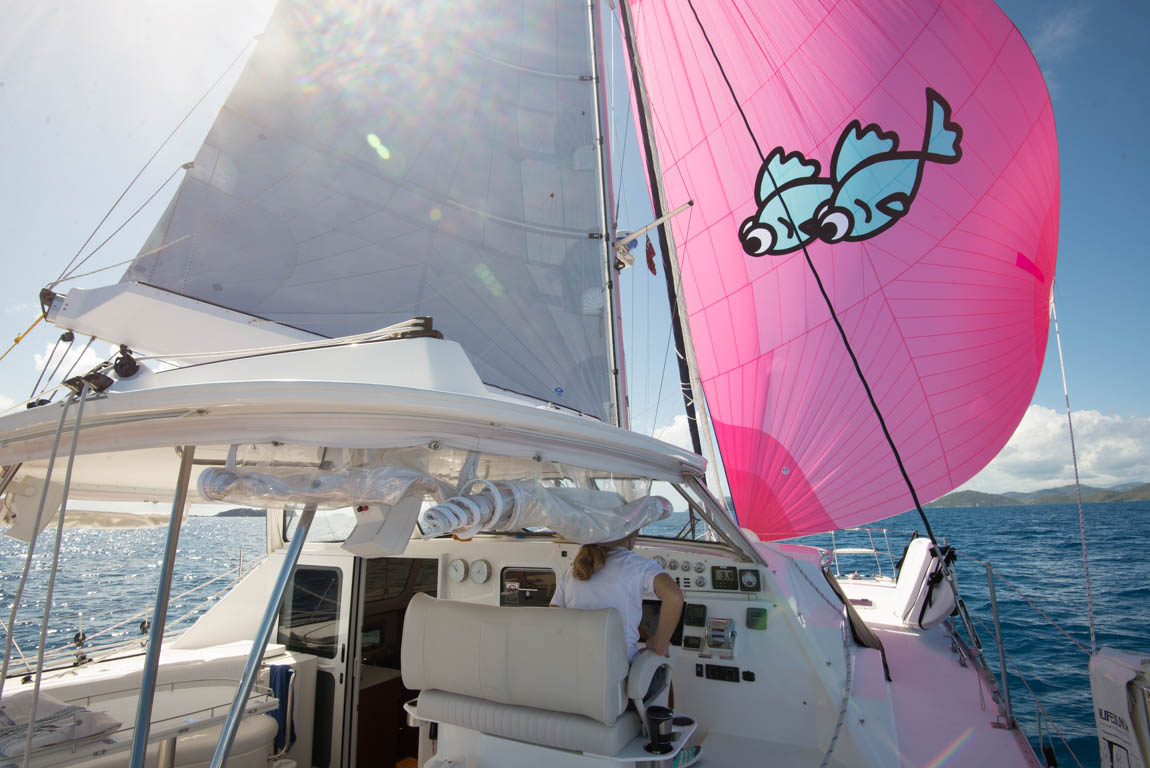Cruising sailboats are often sighted traveling dead downwind. The crew will poll out a single headsail, launch the chute or have twin headsails. Typically the main is not hoisted. The boat then steers dead downwind, but, is this efficient? Gail says, “Who cares? It is comfortable and easy to maintain.”
Let us look at the hard numbers.
Choice A:
Sail dead downwind for 1 hour at 5 knots. The next sunny anchorage is dead down wind so this is the most direct course.
Choice B:
Sail on a deep reach at a true wind angle of 140 degrees to the wind. This allows for increased apparent wind and a bit of the slot effect to power the boat to increased speeds. The speed through the water will increase, but will it compensate for the increased distance one needs to sail? If you travel at 6.52 knots for a half-hour and then jibe to the same wind angle on the other tack, you will arrive at your anchorage at the same time. You need to travel at least 30% faster! From experience in light to moderate air, this is achievable. In stronger breezes, I tend to go dead downwind, since the boat is going fast enough for my taste. However, the 140 degree true wind angle has another benefit. When puffs come, the crew can head down to de-power the boat, an option unavailable to the dead downwind boat. The boat’s polars would also indicate the best idea is to avoid dead downwind.
So what is the best angle? I find anything deeper than a 140 degree true wind angle (i.e. 145, or more) causes the main to blanket the head sail too much. If hand steering, I will flirt with 145 in the puffs and heat the boat up to 130 in the lulls. If I have the boat on autopilot wind mode, then I target 140. 135 feels great but you are sailing 41% more nautical miles than the dead downwind course.
Of course, speed is great but comfort is key. Sometimes the jibing angles can be less comfortable due to the seas. Or sometimes the crew is not up for jibing every 3 hours.
How did I get these cool numbers? My clever wife used her geometry and cosine skills. Our Furuno navigation system displays VMC(velocity made course) or VMG(velocity made good). I find these not be as useful because they rely on the paddle wheel and get fooled by a slightly off-angle waypoint. On some jibes you look like you have made a great decision, while on other jibes you look as if you are sailing in reverse. It is easier to just use the ratios. Play with your sails to find your best ratio beating set up.
